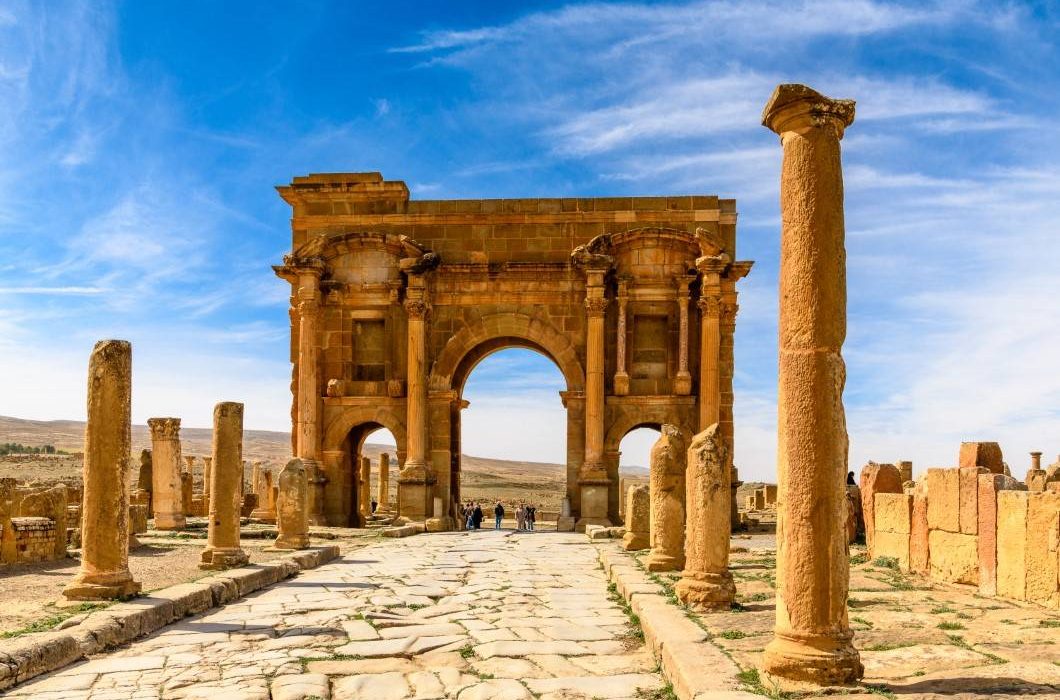
You might also like:
A coastline of over 1,600 kilometers, an ancient city (Djemila) in the Highlands at Setif, a breath-taking canyon (Ghoufi) in the Aures, the majestic Mount Assekrem in Tamanrasset and much more. At first glance, Algerian tourism attractions seem so diverse and interesting that they may be able to seduce visitors from all over the world. However, that is not the case.
The few figures announced from time to time by managers of the travel sector give an idea of the extent of the delay in the development of the industry. In 2017, Algerian tourism revenue was estimated at $300 million. This represents 1.4% of the country’s GDP. The number of tourists from abroad was estimated between 2.3 million and 2.7 million per year.
This figure, however, includes more than one million nationals living abroad “returning to Algeria for family visits” and other foreign workers. Reportedly, even Syrian exiles are counted into the amount. At the same time, there is no statistics of foreign residents and non-residents in Alegria by hotel or region.
According to expert Said Boukhelifa, in 2018 the number of tourists coming to Algeria through travel agencies did not exceed 2,000. He also adds that “the number of tourists has not exceeded 3,000 per year in the last twenty years”.
For at least four years, successive officials at the helm of the Ministry of Tourism have repeatedly reaffirmed the government’s desire to revive the sector. Abdelkader Benmessaoud has called for “the strengthening and promotion” of Algeria as a tourist destination through the diversification of programs and organization of trips to different regions of the country.
But in reality, not much changed and Algerian tourism sector is in need of investment. “Five years ago, prime minister Abdelmalek Sellal was instructed to revive the agriculture and tourism sectors. Six months later, the Ministry of Tourism becomes a department attached to the Ministry of Environment as a part of a reshuffle,” said Boukhelifa. The budget allocated to this ministerial department has also been reduced, according to him.

From 4.2 million dinars in 2012, the department’s budget has decreased to 3.1 million under the 2018 budget law. “Decision-makers have neglected this sector for thirty years,” Boukhelifa says. How does he explain this paradox in a country with undeniable potential? “Hydrocarbons,” he replies.
“We think that we can revive Algerian tourism when we need it. Except that a tourist destination is built or rebuilt in the long term and not with a magic wand. As a result, Algeria is practically non-existent on the world tourist map today,” he explains.
Faced with strong competition in the Mediterranean, Algeria suffers from a real problem of promotion. To find out about the destination, foreigners wishing to visit the country have the choice between Facebook pages of some operators, sites of some public institutions including that of the Ministry of Tourism in only two languages, Arabic and French.
“The site of the Ministry of Tourism is hit by indigence, as well as the Algerian National Tourist Office’s. Our sites, our portals, are very far from the competition in the Mediterranean basin. The website of Tunisia is in four languages. Visit Morocco is available in eleven languages. E-tourism is still neglected in Algeria today,” Boukhelifa notes.
Along with the absence of real promotion of the destination there are also difficulties encountered by many travelers to obtain Algerian visa, especially those who choose not to solicit travel agencies. “They tell them that you need an invitation from the travel agency,” the expert says.

Another black spot of the Algerian tourism sector is the availability and condition of the infrastructure. “We only have 50,000 beds by the sea,” Boukhelifa re-calls. In total, Algeria has just over 110,000 beds. “The development projects of tourist areas promoted by the state in the south are inadequate,” said an anonymous owner of a guesthouse in Southern Algeria.
In addition to infrastructure problems, tourist destinations within the country can be very dangerous at times. “Of the 1,600 kilometers of coastline, we have one-third of farmland, one-third of rocky creeks and one-third of sandy beaches. Our beaches are poorly maintained, too,” Boukhelifa continues.
Last summer, four people were killed at the seaside, he adds. “There are murders in the Mediterranean countries, but it happens in cabarets, at the exit of discotheques, but not at the beach.” It is also for security reasons that some places, among the most coveted in Algeria, remain closed to foreigners.
And despite the low quality of services offered and the decline in the value of the dinar, Alegria also remains among the most expensive destinations in the Maghreb. “Let’s take the transport. The cost of Paris-Ghardaia trip or to Tamanrasset is just enormous. Once in the south, transportation is also expensive. We do not have an attractive product. A stay at the sea costs 50,000 dinars per week (nearly 400 euros). For twenty years, we have been ranked last place with Lebanon, which has been a victim of the war,” emphasized Boukhelifa.
There has been much talk of a tourism revival. But experts in the sector agree that the problem is much more complex and that the whole government must cooperate to find a solution to this problem. “We have to approach the problem differently. Outside the tourism sector, it is necessary to implement a sufficient economic strategy,” Boukhelifa concluded.
Source: tourism-review.com



